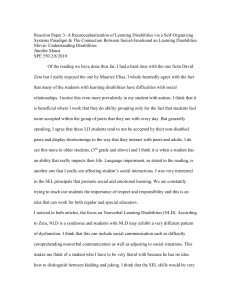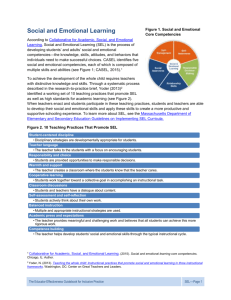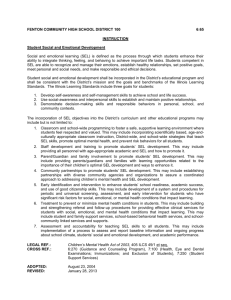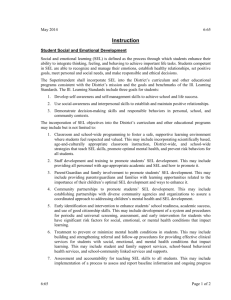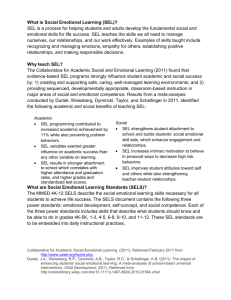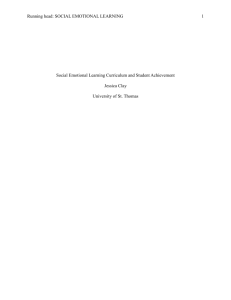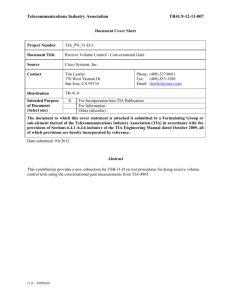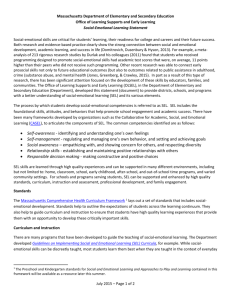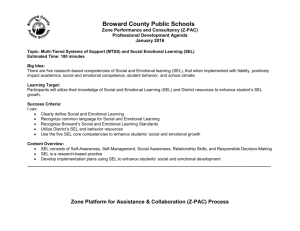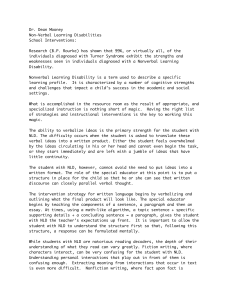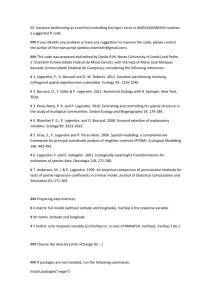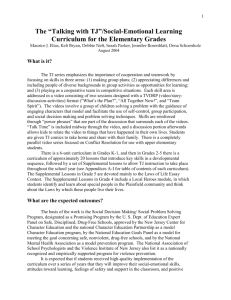Reaction Paper 3
advertisement
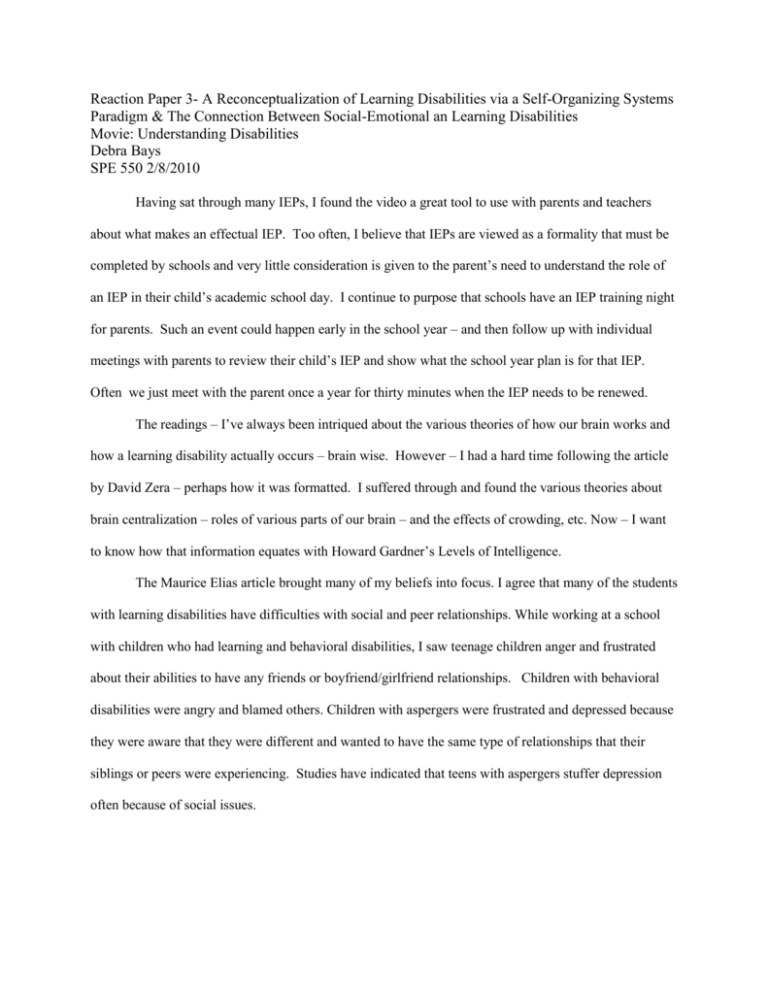
Reaction Paper 3- A Reconceptualization of Learning Disabilities via a Self-Organizing Systems Paradigm & The Connection Between Social-Emotional an Learning Disabilities Movie: Understanding Disabilities Debra Bays SPE 550 2/8/2010 Having sat through many IEPs, I found the video a great tool to use with parents and teachers about what makes an effectual IEP. Too often, I believe that IEPs are viewed as a formality that must be completed by schools and very little consideration is given to the parent’s need to understand the role of an IEP in their child’s academic school day. I continue to purpose that schools have an IEP training night for parents. Such an event could happen early in the school year – and then follow up with individual meetings with parents to review their child’s IEP and show what the school year plan is for that IEP. Often we just meet with the parent once a year for thirty minutes when the IEP needs to be renewed. The readings – I’ve always been intriqued about the various theories of how our brain works and how a learning disability actually occurs – brain wise. However – I had a hard time following the article by David Zera – perhaps how it was formatted. I suffered through and found the various theories about brain centralization – roles of various parts of our brain – and the effects of crowding, etc. Now – I want to know how that information equates with Howard Gardner’s Levels of Intelligence. The Maurice Elias article brought many of my beliefs into focus. I agree that many of the students with learning disabilities have difficulties with social and peer relationships. While working at a school with children who had learning and behavioral disabilities, I saw teenage children anger and frustrated about their abilities to have any friends or boyfriend/girlfriend relationships. Children with behavioral disabilities were angry and blamed others. Children with aspergers were frustrated and depressed because they were aware that they were different and wanted to have the same type of relationships that their siblings or peers were experiencing. Studies have indicated that teens with aspergers stuffer depression often because of social issues. In the classroom, we can address some of these issues by ability grouping and creating social situations where students interact. However, we continue to struggled with the fact that despite great efforts children with disabilities are often shunned by non-disabled students. Zera and Elias addressed the issues of Nonverbal Learning Disabilities (NLD). Zera tells us that NLD is a syndrome and students with NLD may exhibit a very different pattern of dysfunction. Having worked with children with autism and asperger – we had to develop cue cards so our children could not what some of the nonverbal communication meant. Additionally, we worked with our students’ therapists to develop a list of appropriate personal space and touching meant – and reinforced that information verbally and visually daily. Otherwise these students who suffered from NLD simply had no idea that they were behaving inappropriately. The Anger Thermometer and Mood Thermometer is something that we used at our school daily – posters in every classroom – every office . Often times – the discussion with students would ask – where are we today – where do we want to be. For two years, I worked at a school who mandated SEL – social and emotional learning. Personally, I am a firm believer in SEL. However- my school experience was one of SEL gone bad. SEL training consisted of two days – where sessions were not well structured. Teachers were handed these step by step books and mandated that they teach SEL for 45 minutes a day. No ongoing training – no support system – nothing. But SEL was mandated. Teachers were resentful and had no idea what they were doing. Some teachers simply didn’t do it. Some teachers bought into it and created a great SEL curriculum. When implemented correctly, SEL is an incredible curriculum. When implemented poorly, SEL is dreaded by teacher and students.
